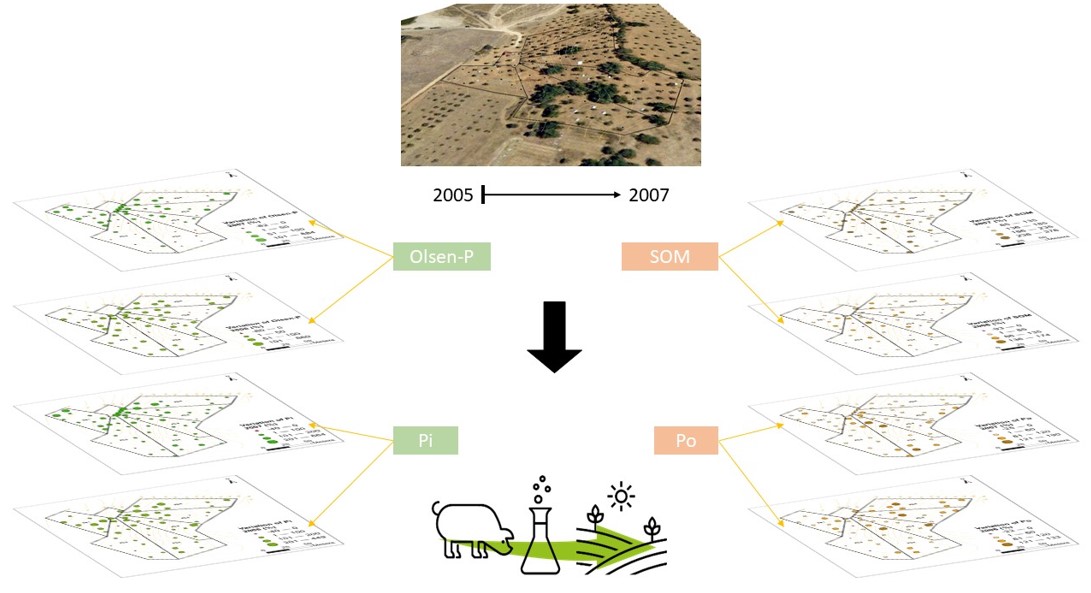The Mediterranean region offers good weather conditions for outdoor pig production (OPP), which is considered more environmentally friendly than intensive indoor production. However, the continuous input of food and pigs' excreta increases the soil organic matter (SOM) and phosphorus (P), increasing the risk of waterbodies eutrophication. This work aimed at evaluating in OPP areas soil P dynamics and the role of SOM on P sorption and P release. The experiment was done for two years, at an area of 2.8 ha with an animal charge of 9 adults ha-1. Georeferenced soil samples were taken at 0.20 m depth, and a soil P sorption experiment was carried out. At the end of the experiment, for the background value, the levels of SOM increased between 85–376%, and Olsen P values ranged between -82–884%. SOM levels above 2% caused a decrease in the binding energy of P sorption according to the linear model b=-15.541SOM+115.20 (p <0.01) as well as a decrease of the soil P sorption capacity Qmax=-41.272SOM+298.37 (p <0.01). To avoid the accumulation of SOM and P preventing hotspots for waterbodies eutrophication, an adequate animal charge together with soil cultivation for pig grazing can be a cost-effective practice.

